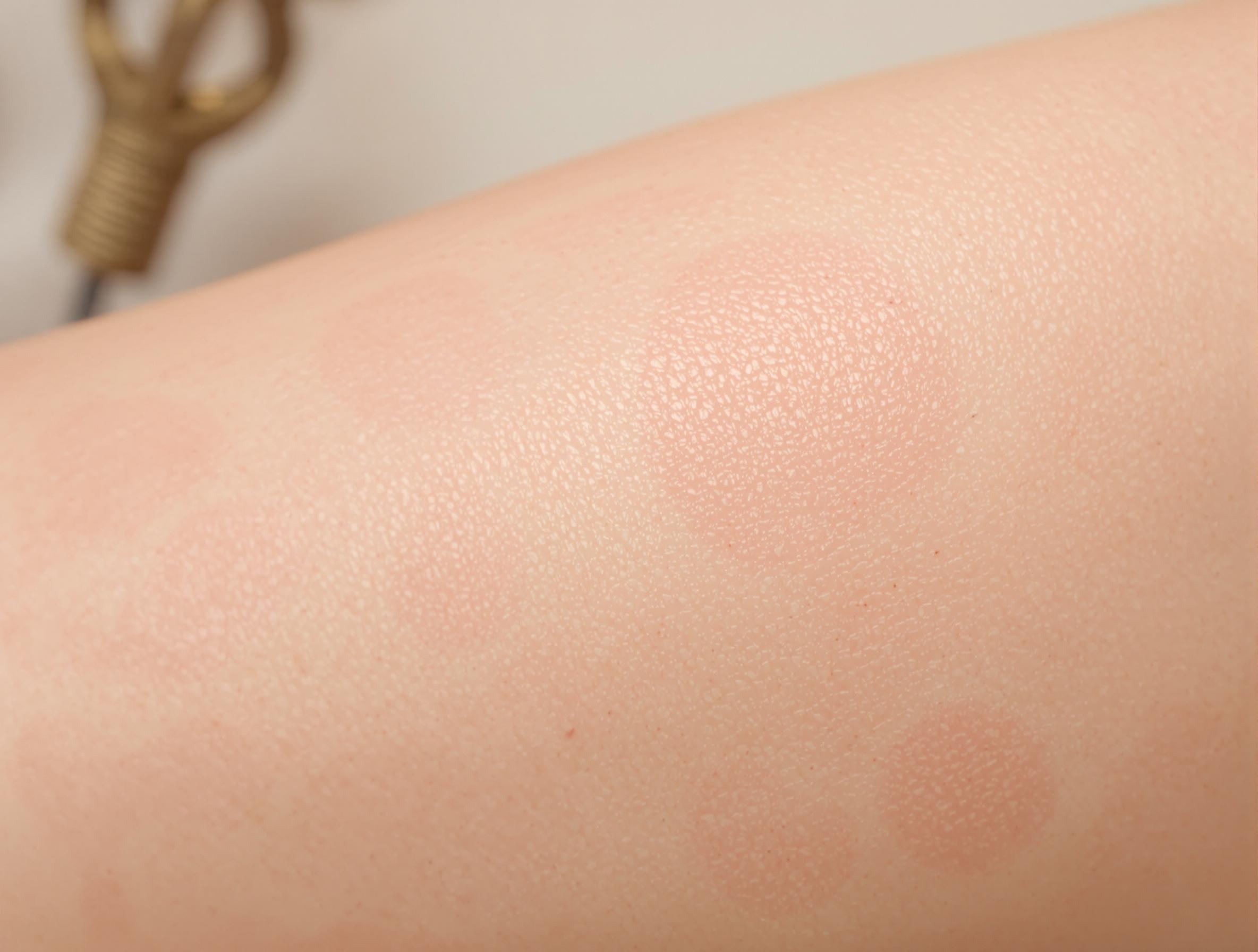What is Toxic Mold Rash? Symptoms and Solutions Explained

Key Takeaways:
- Toxic mold rash is a skin reaction caused by exposure to mold spores. It appears as itchy, pink, or brown patches with small raised bumps.
- Beyond skin reactions, mold exposure can cause severe health issues such as breathing difficulties, fatigue, and cognitive problems.
- Effective treatment involves symptomatic relief with antifungal creams and antihistamines and addressing the mold sources in your environment to prevent further exposure.
Have you ever experienced an unexplained rash that just wouldn’t go away? In a damp or humid environment, toxic mold might be the hidden culprit. Exposure to harmful mold can lead to health issues beyond skin reactions. From breathing difficulties to severe allergic responses, the impact on your well-being can be unique and challenging.
At Mobile Care Health, we’re here to listen and understand your concerns. Our team recognizes that each person’s experience with mold-related health issues differs, and we’re committed to providing care tailored to your needs. We treat the symptoms and help you identify and address the root cause of your health concerns.
What is toxic mold rash?
A mold-related skin reaction occurs when a person’s body responds to contact with mold spores or their byproducts. This condition often appears as sensitive skin with brown or pink patches and small raised bumps that may release fluid. Unlike common skin irritations, this particular rash stems from exposure to certain molds thriving in damp or poorly ventilated spaces within homes and buildings.
It’s worth noting that skin symptoms rarely occur in isolation. Many individuals experiencing mold-induced rashes also report breathing difficulties, unusual tiredness, and persistent headaches. These additional health concerns can sometimes overshadow the skin reaction, making identifying mold as the underlying cause challenging.
People with existing mold sensitivities or weakened immune systems may be more prone to developing these skin reactions. You might be at higher risk if you have a history of allergies or live in a humid climate.
Causes of Toxic Mold Rash
Understanding the key triggers of toxic mold rash can help protect yourself and your loved ones. Here are the underlying factors that contribute to this condition:
- Exposure to mold particles triggers allergic reactions in sensitive individuals, leading to skin rashes and other symptoms
- Inhaling or touching fungal spores activates the immune system, causing inflammation and skin irritation in those with mold allergies
- Prolonged exposure to damp environments increases the risk of developing mold-related health issues, including skin rashes
- Compromised immune systems make people more susceptible to mold reactions, intensifying the body’s response to even small amounts of exposure
- Specific mold species produce mycotoxins, which can penetrate the skin and cause more severe reactions in some individuals
- High-humidity areas like bathrooms, basements, and kitchens create ideal conditions for mold growth, increasing the likelihood of exposure
At Mobile Care Health, we understand how these factors can impact your well-being. Our team is here to provide personalized care and tailored solutions for your unique situation, ensuring you receive the support you need to address mold-related health concerns.
Signs Your Skin is Reacting to Mold
Mold exposure can affect your skin in various ways. Knowing what to look for helps you take action quickly. Here’s what you might notice:
- The skin turns red and itchy, with small bumps that look like tiny hills
- Affected areas feel tender like they’ve been rubbed too hard
- Skin color changes to brown or pink in spots
- Small bumps appear that might leak fluid and form crusts
- Constant urge to scratch the affected skin
Remember, these signs can be different for everyone. Some people might have mild symptoms after brief contact with mold, while others could experience stronger reactions if they’re around it for a long time.
It’s also common for mold to affect more than just your skin. You might also:
- Have trouble breathing, like coughing or feeling out of breath Get a stuffy or runny nose
- Have watery, itchy eyes
- Feel very tired or generally unwell
Risks of Ignoring Toxic Mold Rash
A toxic mold rash can lead to serious health issues when left untreated. Understanding these risks is key to taking timely action. Here’s what you should know about potential consequences:
- You might struggle with ongoing breathing problems. A study found that 80% of people living in damp conditions reported respiratory symptoms, compared to only 29% in mold-free environments.
- Your thinking might become fuzzy. “Brain fog” and other cognitive issues affected 62% of those exposed to fungal presence versus just 11% in mold-free groups.
- Your skin could become more vulnerable. Untreated rashes may lead to open sores, increasing your chances of getting bacterial or fungal infections.
- Your allergies might get worse. Continued contact with mold can intensify allergic responses, potentially leading to more severe symptoms over time.
- You could feel tired all the time. Long-term exposure to toxic mold has been linked to ongoing fatigue and reduced quality of life.
At Mobile Care Health, we know these risks can be worrying. Our team is here to provide personalized care and support, helping you address mold-related health concerns before they become more serious. Don’t let a toxic mold rash affect your well-being – contact us for friendly guidance and treatment options tailored just for you.
Effective Treatment Options for Toxic Mold Rash
Tackling a toxic mold rash calls for a comprehensive approach. Let’s explore some effective ways to manage and treat this condition together:
- Soothe your skin with over-the-counter antifungal creams, which can help reduce inflammation and itching
- Find relief from allergic symptoms and itching by taking oral antihistamines
- For more severe cases, your doctor might recommend corticosteroid creams to calm inflammation and skin irritation
- Support your body’s natural healing with a gentle body-cleansing routine, which may include dietary changes and carefully chosen supplements
- Prevent further exposure by identifying and removing mold sources in your home or workplace
- Partner with a healthcare professional to create a treatment plan tailored just for you, especially if your symptoms stick around or get worse
Take charge of your health today
Mold-related skin reactions are more than surface irritations—they signal that your body needs attention. Recognizing symptoms early and seeking proper care can prevent long-term health issues. A holistic strategy is essential when addressing fungal-induced concerns, encompassing symptom treatment and identifying and eliminating mold sources in your environment.
We understand how mold-related health issues affect your daily life and are here to help. At Mobile Care Health, we’re committed to providing personalized care that addresses your unique needs.
Our team employs advanced diagnostic tools and tailored treatment plans to support your recovery from mold exposure and enhance your overall well-being. Your health journey is individual, and we’re here to walk alongside you every step of the way. Contact us for a comprehensive wellness assessment and take a confident step towards lasting health today.





